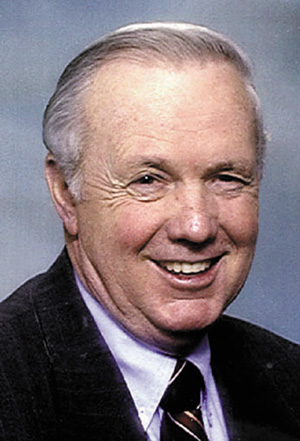No. 946 WHAT TIME IS IT?
No. 946
Jim Davidson -- NEWSPAPER COLUMN
WHAT TIME IS IT?
Every so often I run across a bit of information just by chance that, in one way or another, has touched every life in our country. Such was the case today when I got an e-mail from my friend Cliff Garrison, who had forwarded something sent to him by another friend, Rodney Todd. The Lord only knows where he got it. This is another case where e-mail can serve a very useful purpose in our lives. I have a large number of friends who send me things on a regular basis that have been both informative and entertaining. This serves to make life interesting, because I believe we should learn something useful every day of our lives.
Today I learned about watches and how they spread all across our country starting back in 1880. This true story has a most unusual twist about a major corporation in our nation today and how it got started. The story begins with these words, “If you were in the market for a watch in 1880, would you know where to get one? You would go to a store, right? Well, of course you could do that, but if you wanted one that was cheaper and a bit better than most of the store watches, you went to a train station! Sound a bit funny? Well, for about 500 towns across the northern United States, that’s where the best watches were found.
“Why were the best watches found at the train station? The railroad company wasn’t selling the watches, not at all. The telegraph operator was. Most of the time the telegraph operator was located in the railroad station because the telegraph lines followed the railroad tracks from town to town. It was usually the shortest distance and the rights-of-way had already been secured for the rail line. Most of the station agents were also skilled telegraph operators, and that was the primary way they communicated with the railroad. They would know when trains left the previous station and when they were due at the next station.
“And it was the telegraph operator who had the watches. As a matter of fact, they sold more of them than almost all the stores combined for a period of about nine years. This was all arranged by “Richard,” who was a telegraph operator himself. He was on duty in the North Redwood, Minn., train station one day when a load of watches arrived from the East. It was a huge crate of pocket watches. No one ever came to claim them. So Richard sent a telegram to the manufacturer and asked them what they wanted to do with the watches. The manufacturer didn’t want to pay the freight back, so they asked Richard if he could sell them. And so he did.
“He sent a wire to every agent in the system asking if they wanted a cheap, but good, pocket watch. He sold the entire case in less than two days, and at a handsome profit. That started it all. He ordered more watches from the watch company and encouraged the telegraph operators to offer high quality watches for a cheap price to all the travelers. It worked. It did not take long for the word to spread and, before long, people other than travelers came to the train station to buy watches. Richard became so busy that he had to hire a professional watch maker to help him with the orders. That was Alvah, and now, the rest is history.
“Richard Sears and Alvah Roebuck left the train station and moved their company to Chicago – and it’s still there. You may recognize the name of their company. It’s called ‘Sears & Roebuck’ and today simply “Sears.”
I can still remember getting those Sears & Roebuck catalogs. By the way, what time is it? Probably later than we think!
---
(EDITOR'S NOTE: Jim Davidson is a public speaker and syndicated columnist. You may contact him at 2 Bentley Drive, Conway, AR 72034. To begin a bookcase literacy project visit www.bookcaseforeverychild.com. You won’t go wrong helping a needy child.)
